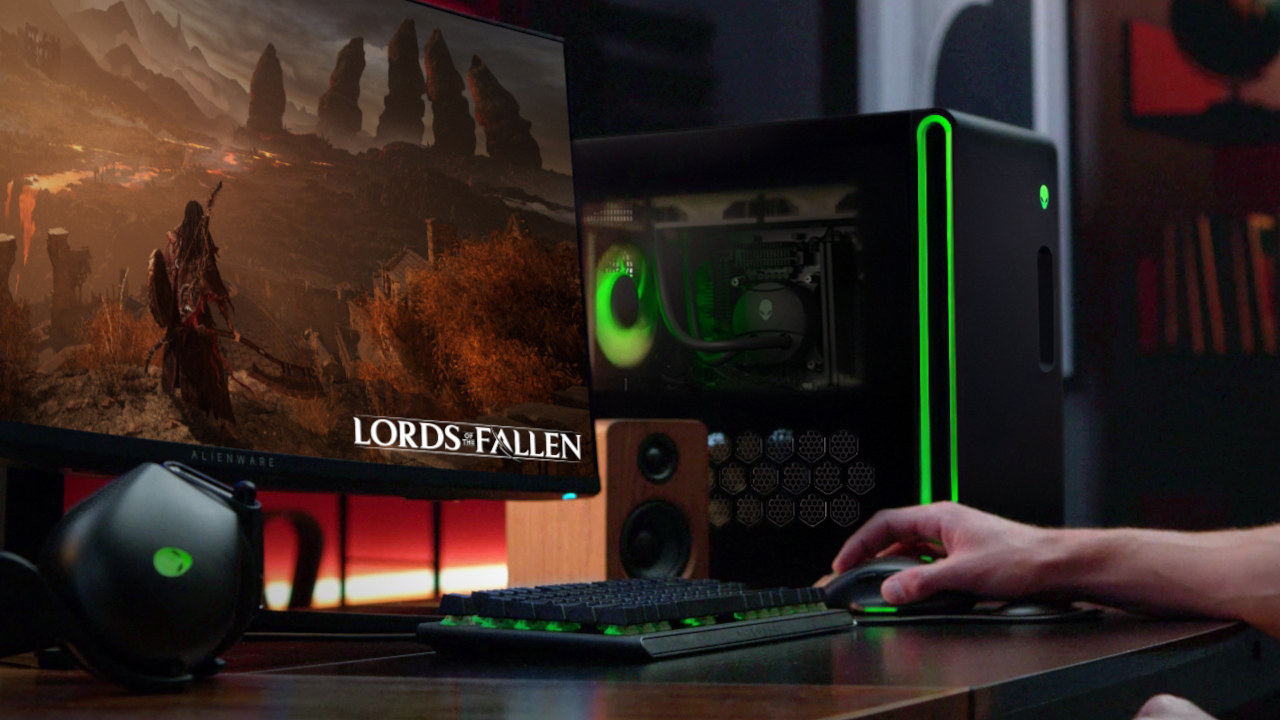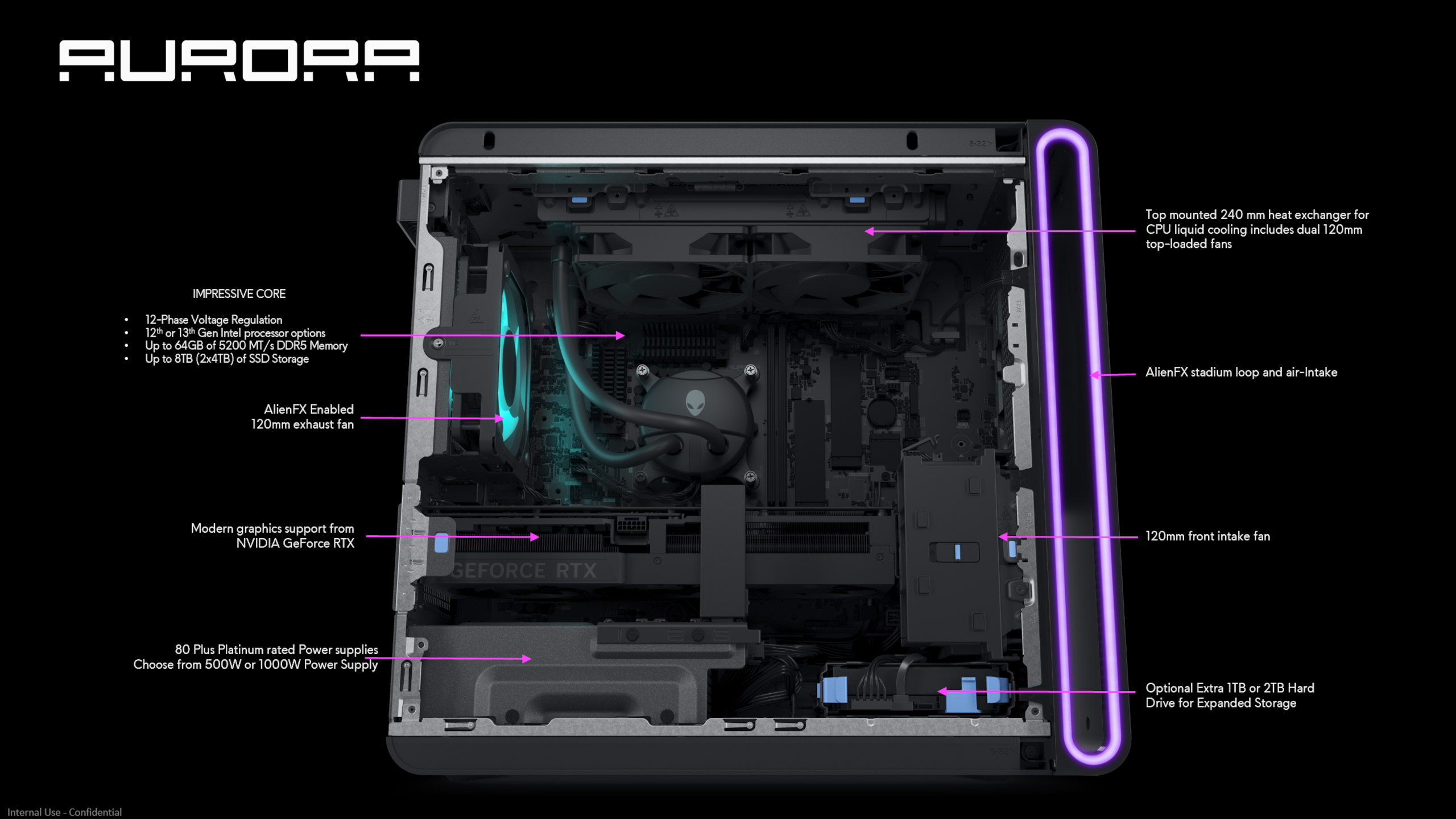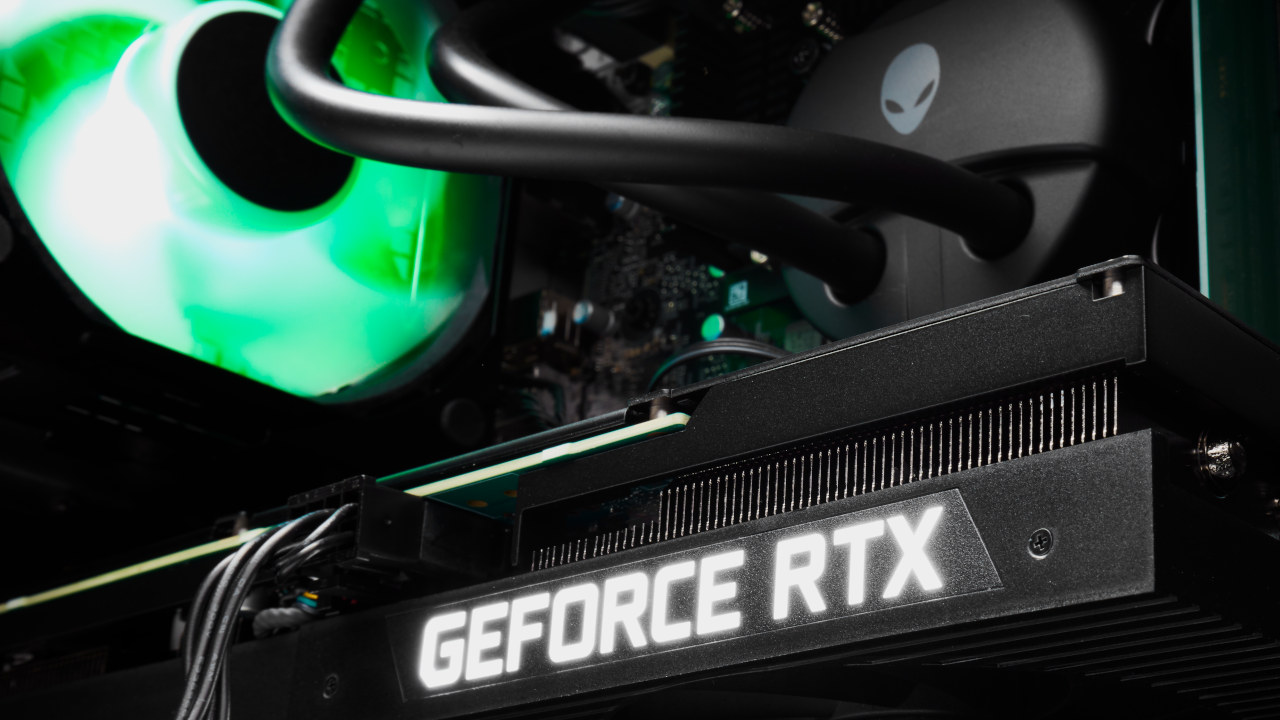Alienware's Aurora R16 gaming PCs drop the ugly designs and gain hotter hardware
Its pre-built gaming desktops finally look normal.

What you need to know
- Alienware introduces its Aurora R16 pre-built gaming desktop, featuring improved airflow and acoustics at a 40% size reduction compared to the previous R15.
- Customizable components include Intel Core 12th and 13th Gen CPUs, NVIDIA GeForce RTX 40-Series GPUs, DDR5 memory, solid-state storage, and up to 1000W power supplies.
- Starting at $1749.99, the Aurora R16 is available from August 3, 2023, with a 13th Gen Intel Core i7-13700F CPU and NVIDIA GeForce RTX 4070 GPU.
Alienware has unveiled the latest addition to its range of pre-built gaming desktop PCs with the stunning new Aurora R16, advancing airflow and acoustics to offer a more traditional full-size tower form factor with the same overall volume as the R15. Based on its internal 'Legend 3' design language codename, the streamlined aesthetics still focus mainly on color-changing AlienFX RGB, including a looped front-facing air intake vent.
Launching its companion Alienware Command Center software earlier this year, the app is ready for the all-new Aurora R16 with controls for the AlienFX lighting, thermal control profiles, and per-game settings for reactive effects.

Underneath the revised AlienFX combination of looped RGB 'stadium' lighting and front air intake, the usual customizable options when ordering the new Aurora desktop are still present. While the base model sticks with Intel CPUs and NVIDIA GeForce RTX 4070/4070 Ti GPUs at launch, Alienware told me in its press briefing that more options are coming soon.
For now, you can grab a R16 featuring the 13th Gen Intel Core i7-13700F, with 16 (8 performance, 8 efficiency) cores and 24 threads. Adjustable memory, storage, and power supplies are also available as you order the Aurora R16 alongside onboard modern Wi-Fi support for high-speed wireless networking:
- NVIDIA GeForce RTX 40-Series GPUs
- Intel Core 12th and 13th Gen CPUs
- 80 Plus Platinum 500W or 1000W PSUs
- Up to 8TB (2x 4TB) SSD storage (optional extra 1TB)
- Up to 64GB DDR5-5200MT/s or 32GB DDR5-5600MT/s RAM
- Wi-Fi 6 or 6E wireless networking and 2.5G LAN
Following a more traditional desktop tower form factor, the Aurora R16 has a total volume (including the case) of 35.9L, measuring a maximum of 418 x 458.4 x 197 mm and up to 15.37kg in weight, depending on your chosen configuration. Alienware has cut around 40% in overall volume over the previous Aurora R15, but the internal space stays at 25.2L, similar to HP's Omen 25L.
Opting for a transparent side panel or a solid door will naturally affect how much the Aurora R16 weighs, alongside your choice of air cooling or liquid cooling and desktop GPU, given most full-size 40-Series RTX cards like the 4070 Ti are pretty hefty. The newly-named Legend 3 design language means the R16 is intended to be viewed from the side, so a clear panel is almost certainly implied to be the default.

When asked about overclocking, Alienware clarified that the custom BIOS for its Z690 chipset motherboards would not allow RAM speed changes at launch and would not comment about other tweaking options in general. We'll have to wait and see if we can get an Aurora R16 for first-hand testing and discover how much tinkering is permitted by Alienware.
Get the Windows Central Newsletter
All the latest news, reviews, and guides for Windows and Xbox diehards.
The Aurora R16 is available from August 3, 2023, starting at $1749.99 directly from Dell's official store with a 13th Gen Intel Core i7-13700F CPU and NVIDIA GeForce RTX 4070 GPU.
As with most generational upgrades, this could trigger discounts on the Alienware Aurora R15. Though the R15 is still configurable with the latest 13th Gen Intel Core CPUs, we'll keep our eyes peeled for any savings.

Ben is a Senior Editor at Windows Central, covering everything related to technology hardware and software. He regularly goes hands-on with the latest Windows laptops, components inside custom gaming desktops, and any accessory compatible with PC and Xbox. His lifelong obsession with dismantling gadgets to see how they work led him to pursue a career in tech-centric journalism after a decade of experience in electronics retail and tech support.
